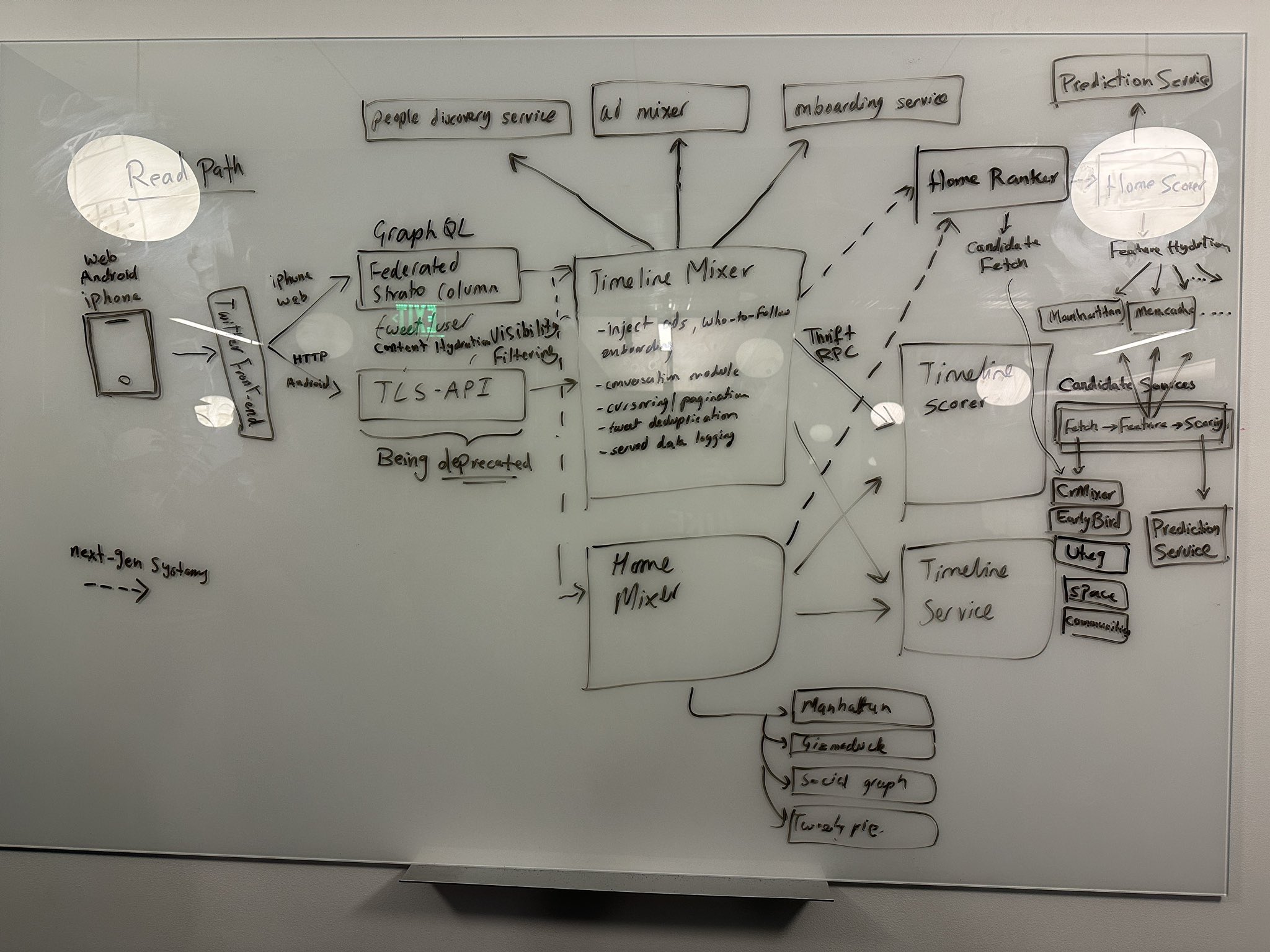Overview
I came across a blog titled “How I Design Software”. The author shared their personal method for approaching software design.
The key message: instead of relying only on code-first, diagram-first, or slides, they found writing detailed documents the most effective way to design systems.
Main Takeaways
1. Code-first approach
The author tried prototyping by coding right away.
Problem: they later felt lost reading the code, struggled to explain the system, and often missed things.
→ Reminder to myself: jumping into code might feel productive, but it can hide gaps in design thinking.
2. Diagram-first approach
They also tried making diagrams.
Problem: diagrams were either too detailed (hard to follow) or too high-level (like a brochure).
Diagrams alone weren’t enough — without written context, they lacked real depth.
Example: Elon Musk once shared Twitter’s architecture diagram. It showed components, but gave little insight into what they really did.
Shared by Elon
3. Slides (design-by-powerpoint)
They also tried using slides with bullet points.
Problem: still easy to miss things, and not good for deeper technical understanding.
The Author’s Approach: Writing
What worked best for them was writing design documents.
They explained:
- It takes more time, but produces clarity.
- Writing down every detail forces thinking through gaps.
- These documents become long-term references with real answers.
They compared this to what Seth Godin once said: “The real way to design software is to spec it out in writing.”
This idea struck me — I often avoid long writing because it feels slow, but maybe that’s exactly why it works.
Workflow First
The author starts by writing a workflow document:
- How the software will be used (step by step).
- Nothing left out, even the obvious.
- This step naturally creates questions to ask stakeholders.
Later, this workflow is refined and shared with non-technical people to check if requirements are covered.
Note to self: writing workflows could save me from adding “cool” features without a real use case. (I’ve done that before!)
Design Overview
Next comes the design overview document:
- Technical view of the workflow.
- Includes descriptions of UI, frontend, backend, databases, protocols, etc.
- Shows how components interact (but no diagrams yet).
Some parts don’t link directly to user workflows (e.g., health checks, background jobs). Those are still captured here as non-functional requirements.
This is also where the author figures out tricky choices:
- Database type
- Reverse proxy
- Scaling strategy
- Eager vs lazy operations
The document is then reviewed with technical stakeholders, like an RFC.
Component Design
When components become clear, each gets its own detailed document.
This document is almost like source code in prose: what the component does, inputs/outputs, security issues, limitations.
Sometimes this isn’t needed, but often with time, these docs grow naturally.
Diagrams
Finally, after writing, they draw design overview diagrams to visualize interactions.
Simple blocks, arrows, text — nothing fancy. Google Slides is enough.
Multiple diagrams may exist if the system is complex.
Limitations They Mentioned
- Time cost → documents take effort to write and keep updated.
- Ownership → if the author leaves, someone else might not maintain the docs.
- Meetings → hard to present long docs to people who haven’t read them. (They suggested making slide summaries.)
My Reflections
What I liked most is the honesty: writing is slow but powerful.
I know I usually try to shortcut design with diagrams or quick coding — but maybe investing in structured writing could prevent many mistakes later.
Future me: remember this. Don’t be afraid of the slow, written path when designing. It might save you from messy surprises down the line.
Summary
This blog convinced me that:
- Writing workflows, overviews, and component docs provides lasting clarity.
- Diagrams and slides are useful companions, but not enough alone.
- The main challenge is the discipline of keeping docs updated.
I want to experiment with this approach in my own projects and see how it works for me.
